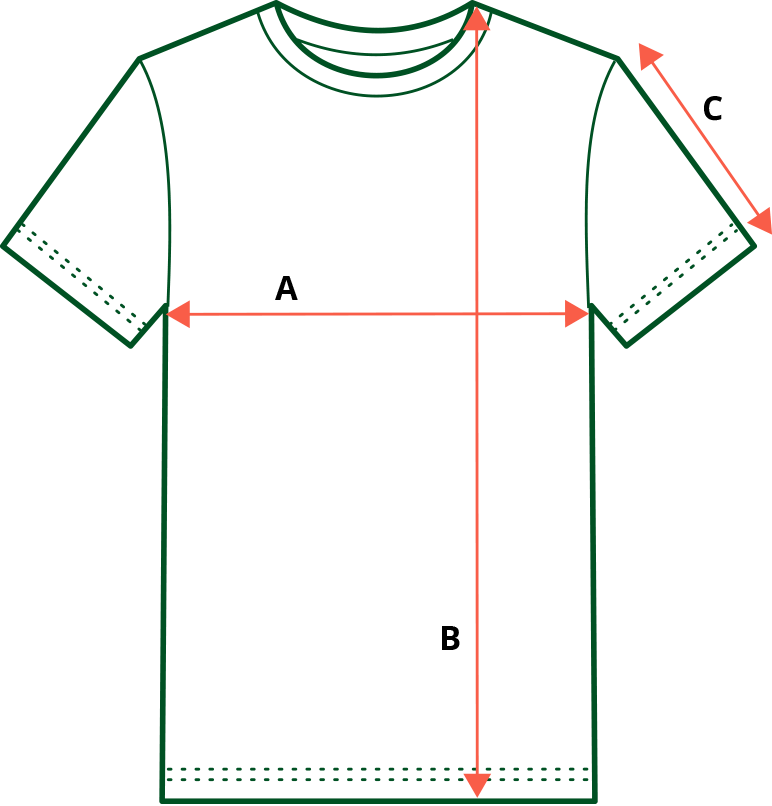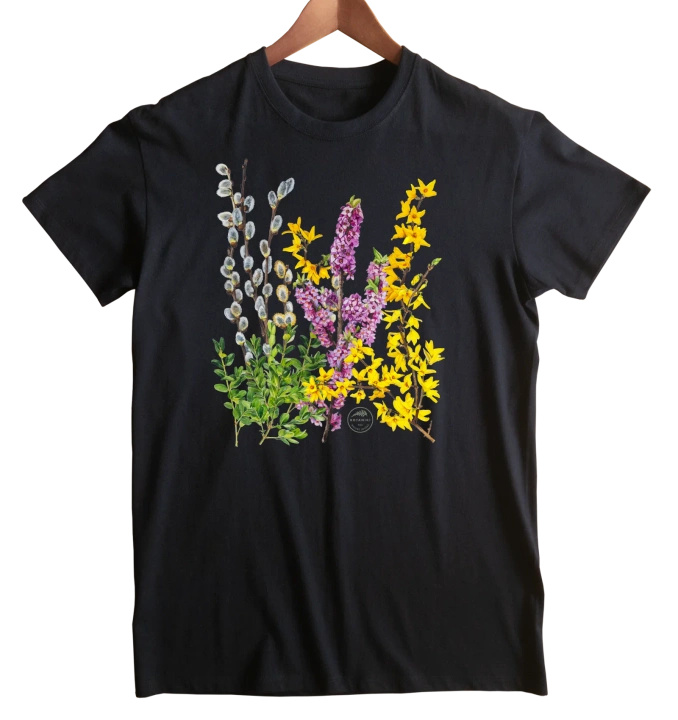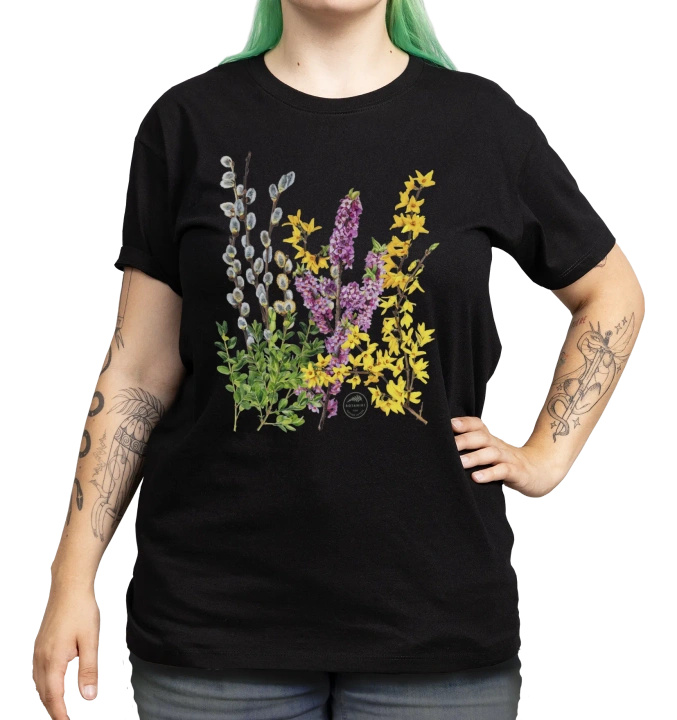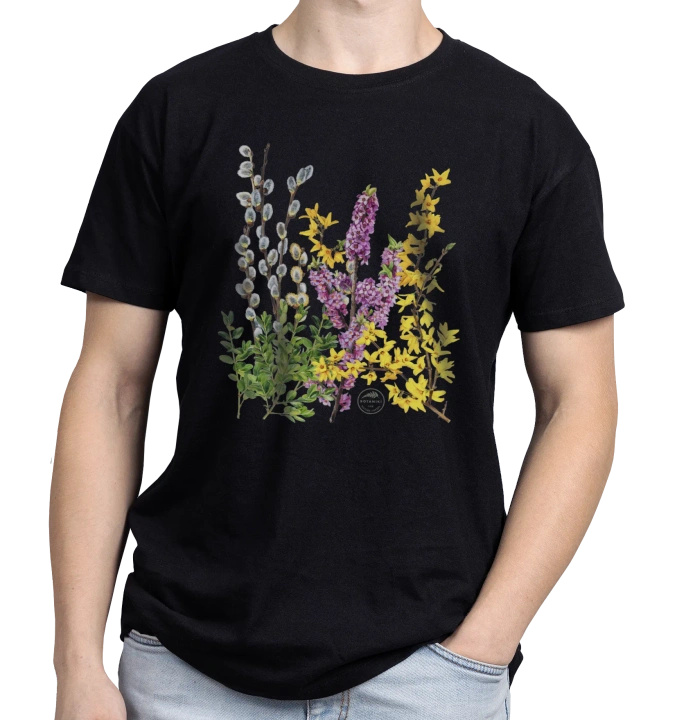Spring shrubs — classic t-shirt
- Plant-themed t-shirts are a gift of avid lovers of all botanical specimens to kindred spirit flora fans and gardening enthusiasts. Knit composition: 100% cotton Weight: 190 g
Subscription products in your shopping cart
Set one delivery frequency for all subscription products in your cart every:
Subscription products in your shopping cart
Shrubs Blooming in Early Spring
Mezereon (Daphne mezereum L.) is one of the earliest blooming plants. Its fragrant pink flowers appear as early as February or March, often before the leaves unfold. It works wonderfully in naturalistic gardens, adding color when other plants are just beginning to grow.
It is a native species, although it's relatively rare in the wild. Its wide range covers Europe and Asia, but in Poland, it's found in only a few locations. Since 2014, it has been under partial protection, meaning it cannot be picked or transplanted from natural habitats.
Goat Willow (Salix caprea L.) is one of the earliest blooming native willows in Poland, recognized as a true harbinger of spring. Its flower clusters, also called catkins, are insect-pollinated and nectar-rich, making them extremely valuable for bees and other pollinating insects. Filled with nectar, they provide one of the first food sources after winter. Interestingly, goat willow is a dioecious plant, meaning it has separate male and female individuals. In gardens, male plants are usually planted due to their abundant blooming and decorative appearance.
Forsythia (Forsythia) is one of the earliest blooming ornamental shrubs that announces the arrival of spring. Its intensely yellow flowers appear on bare branches already at the turn of March and April, even before the leaves develop, making it a particularly striking garden ornament. Forsythia is an insect-pollinated and nectar-rich plant.
Border Forsythia is the most popular variety, frequently seen in gardens, parks, residential estates, and home gardens. It grows quite large (up to 3m high), but there are also lower, more compact varieties. It is easy to cultivate—thriving in full sun or partial shade and tolerant of various soil types. It works perfectly as a hedge or solitary shrub in garden beds.
Boxwood (Buxus sempervirens) is a classic among ornamental shrubs. Its dense, evergreen foliage ensures a garden looks neat and attractive throughout the year. It is ideal for hedges and shaped topiary, adding elegance and structure to spaces. Although it doesn't bloom in spring, it is strongly associated with the season, mainly due to the tradition of placing it in Easter baskets. It forms dense, compact walls of greenery, maintaining popularity in gardens for years.
Unfortunately, the future of boxwood in Polish gardens remains uncertain, mainly due to the box tree moth, which decimates these shrubs. Worse yet, this insect rapidly develops resistance to commonly used insecticides, posing a significant challenge for gardeners.
| Size | Width (A) | Length (B) | Sleeve (C) |
|---|---|---|---|
| XS | 49 cm | 62 cm | 16 cm |
| S | 50 cm | 69 cm | 16 cm |
| M | 53 cm | 72 cm | 17 cm |
| L | 56 cm | 74 cm | 18 cm |
| XL | 58 cm | 76 cm | 19 cm |
| XXL | 62 cm | 78 cm | 19 cm |
| 3XL | 64 cm | 80 cm | 20 cm |
| 4XL | 68 cm | 84 cm | 21 cm |
| 5XL | 72 cm | 88 cm | 21 cm |
How to measure?
The t-shirts are measured flat, loosely. The measurement, which can be found in the table, was taken at the location indicated by the arrows in the picture below:














